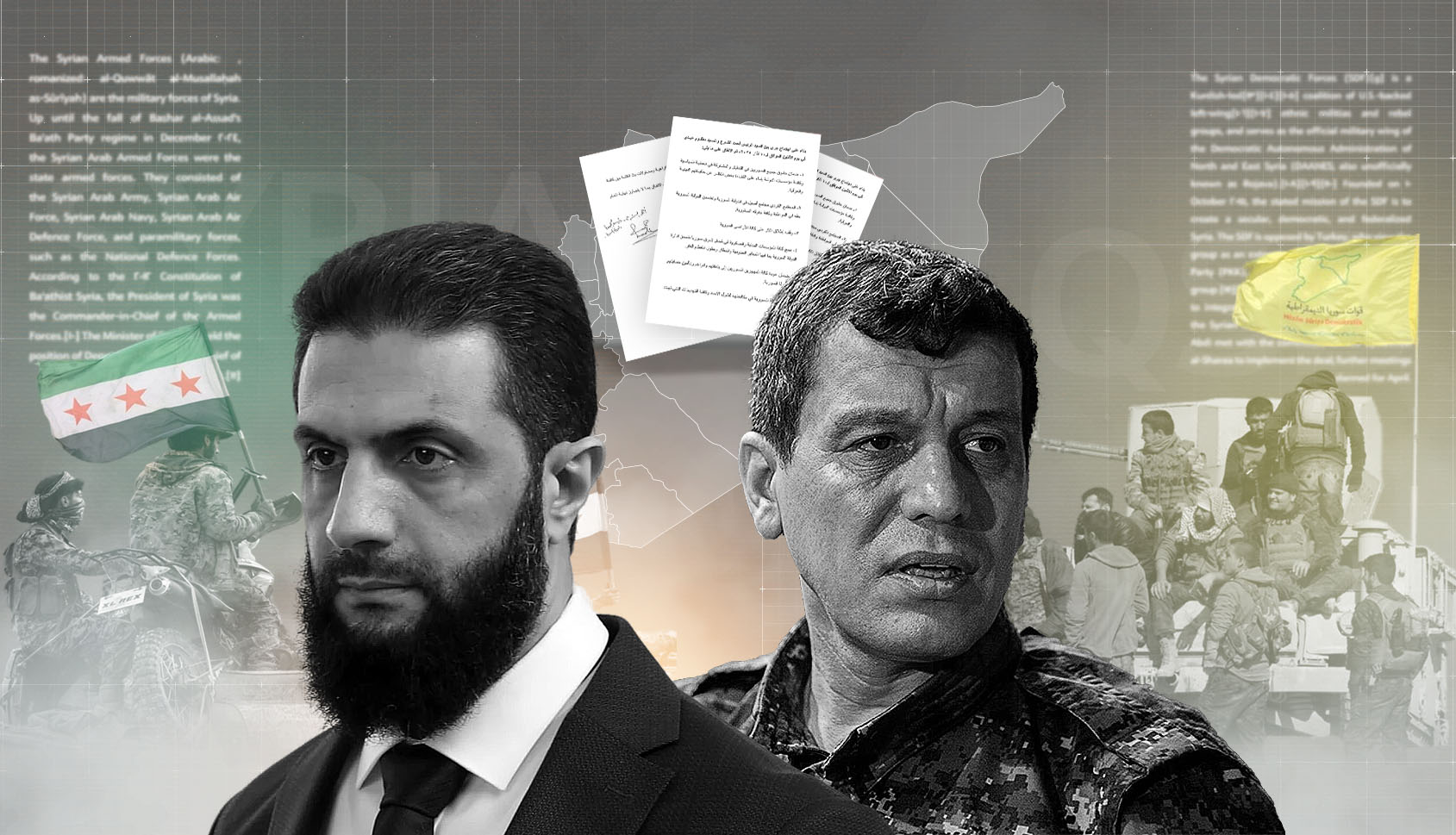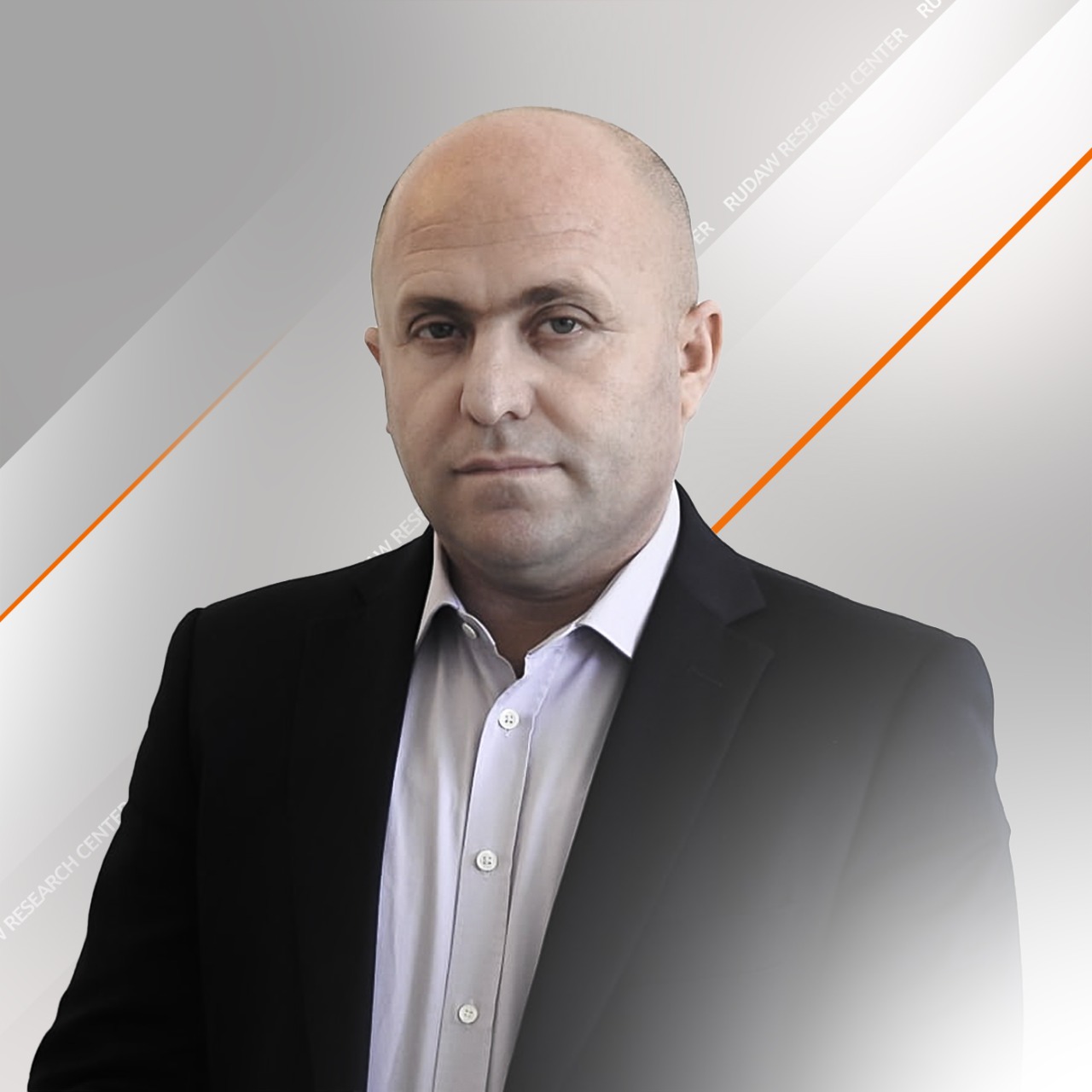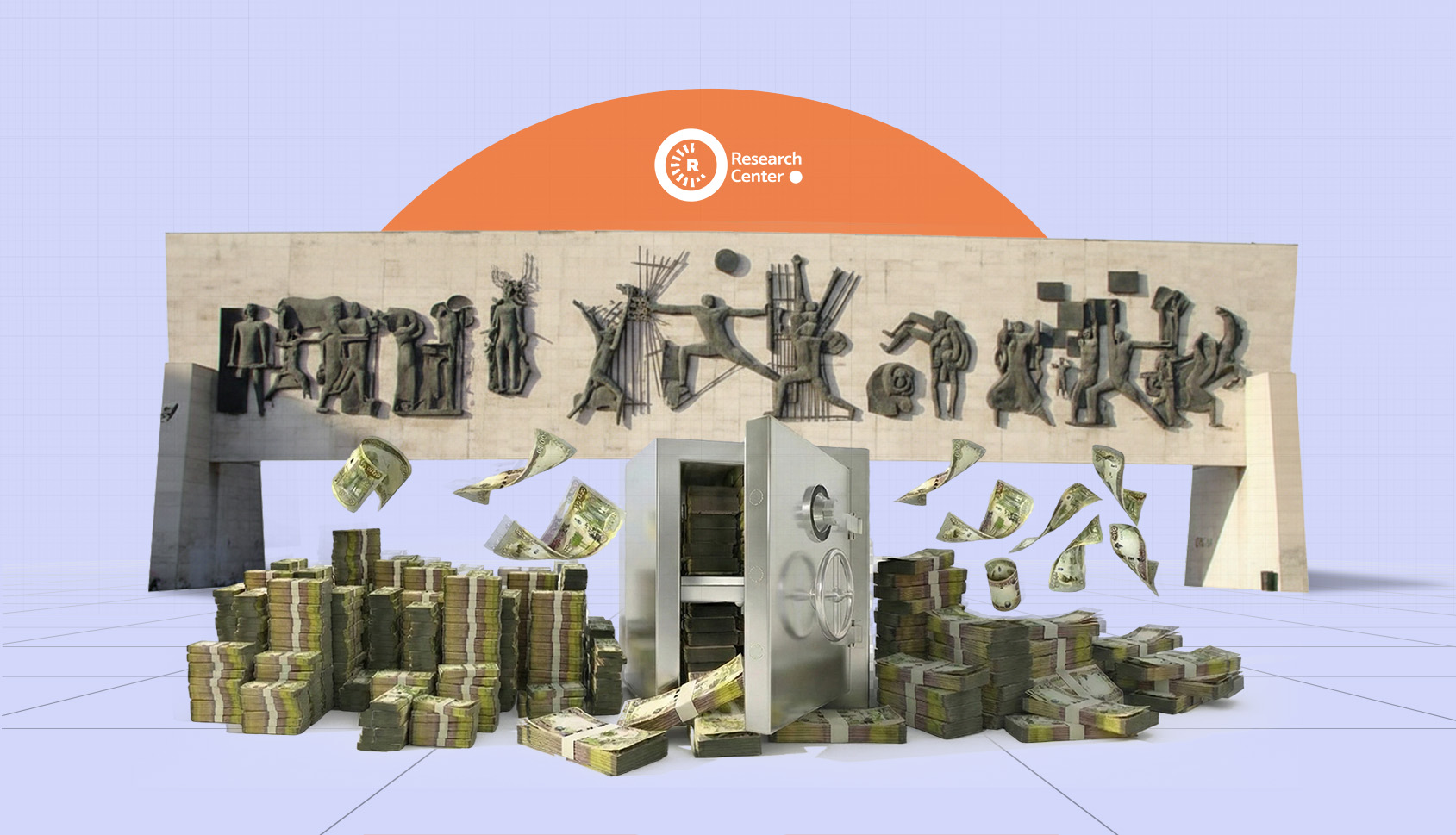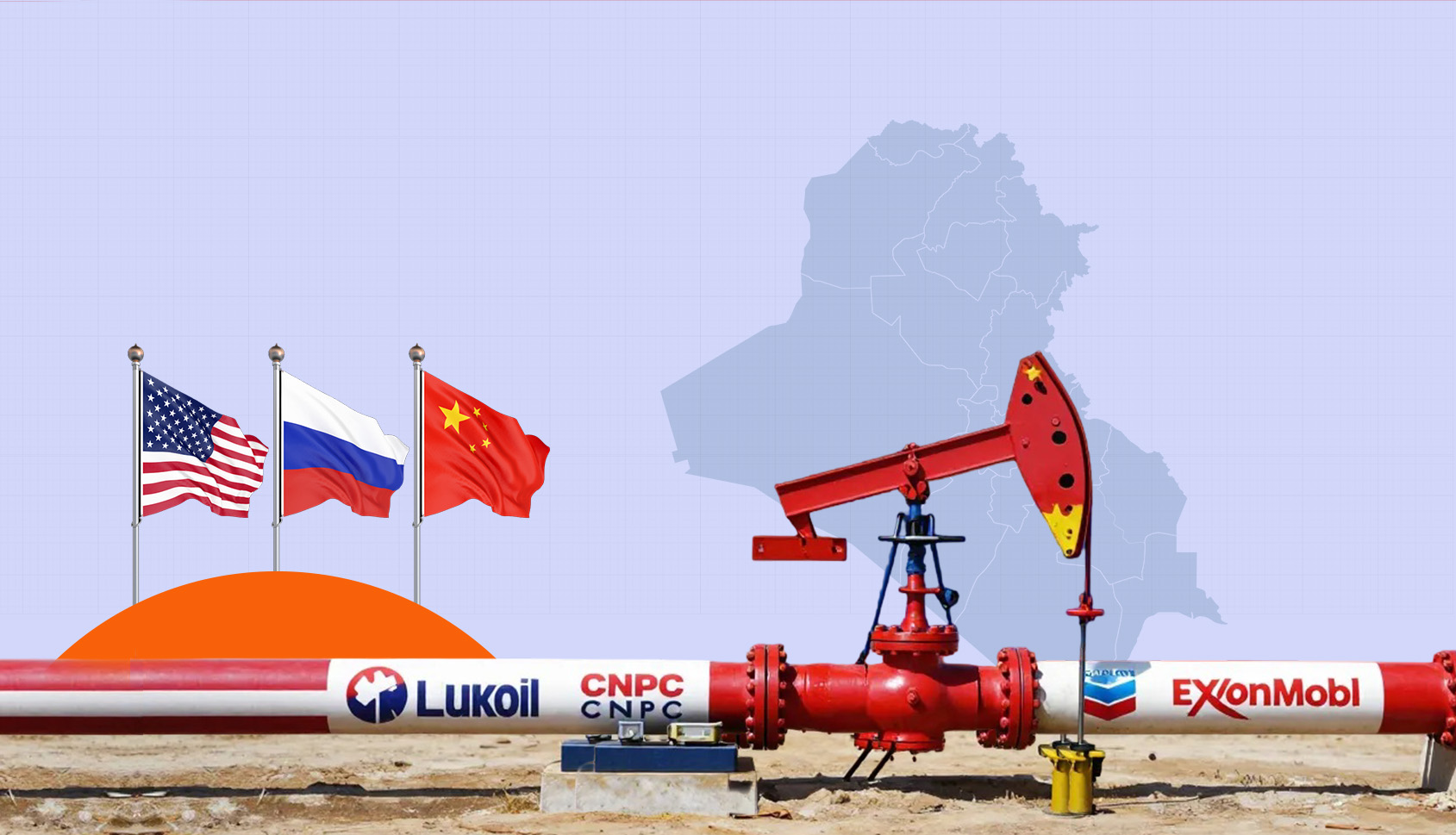While eyes were on an anticipated meeting between SDF and Damascus” al-Sharaa” in Paris, news of fighting between them in southern Aleppo has been ongoing for two days. In reality, the March 10 agreement between al-Sharaa -Abdi is rapidly approaching a turning point, and this will either result in a compromise or, conversely, pave the way for a third brief internal Syrian war during the aL-Sharaa era, which seems likely to intensify along the Aleppo-Raqqa-Deir ez-Zor line. The events in Suwayda paved the way for a de facto autonomy for the Druze. Of course, it's unclear whether this will continue or end somewhere, but if the "al-Sharaa Administration" can quickly resolve the issue of SDF dissolution and the integration of administrative institutions with the state, then it can still have hope for building a central political system that stays away from a shadow and under an authoritarian president. In contrast, SDF feels that compared to pre-Suwayda events, the current situation is a golden opportunity or a last chance, so it speaks louder than before about its survival and political autonomy.
Dayr Hafir War: A Gateway to Intensified Conflicts Over Raqqa and Deir ez-Zor?
There are many indications that if SDF and Damascus don't reach an agreement, conflicts between both sides over controlling the Raqqa and Deir ez-Zor regions will increase. For Damascus, controlling Raqqa and Deir ez-Zor is one of the final stages of weakening al-Sharaa's authority; on one hand, it secures control of economic resources like oil, gas, land, and water, and on the other hand, it reduces the possibility of Syria's future decentralization, which is currently high with the presence of SDF and the Druze. For SDF, losing Raqqa and Deir ez-Zor could mean the end or weakening of its political autonomy project.
The Syrian Ministry of Defense announced on August 2 that SDF attacked the village of "Al-Qaryah" and its surroundings in Manbij with missiles, and SDF says it responded to the "attack by undisciplined groups" that attacked the "Dayr Hafir" area. Fighting continued in other villages near this area. Dayr Hafir is one of the few areas in the western part of the Euphrates in southern Aleppo province that is still in SDF hands; an important area that connects by road after about 150 km to Tabqa in southern Raqqa province. This area is more than 100 km south of Tishreen Dam and Qere Qozaq village, which from late last year until April this year was the field of intense conflict between Syrian opposition groups - Turkish supporters and SDF.
In a hypothetical war scenario, controlling Dayr Hafir for the Syrian government would mean opening a logistical support route to put pressure on Tabqa, and this simultaneously with pressure on Tishreen Dam and Qere Qozaq from the north, would serve as two jaws of a pincer to control Raqqa. For SDF, maintaining Dayr Hafir means maintaining Raqqa, which it apparently doesn't want to give up without a political agreement.
At the same time, Damascus aims to regain control of those areas of Deir ez-Zor that remain in SDF hands on the eastern bank of the Euphrates through tribal assistance, negotiations, and military pressure. During the Suwayda events, Ahmad al-Sharaa, besides the support of his external allies, found another easy and effective card, which was the power of tribes. This didn't yield great results for Suwayda, where the Israeli factor and intense American mediation were present, but it can create major problems for SDF. Therefore, competition between both sides over attracting tribal support continues intensively.
Different Interpretations of al-Sharaa and Kobani
The Suwayda war brought negotiations between SDF and the Syrian interim government to a turning point. What emerged was that each side interpreted the agreement differently, and each of the articles of that agreement has a different meaning for them. Right during the events in Syria's peripheral areas, where 1,334 people were killed in 4 days, al-Sharaa and Kobani suddenly signed a preliminary agreement on March 10, each article of which has been interpreted differently. After the Suwayda events from July 13-16, negotiations between the parties continued to implement that agreement, which had been given a year, but the difference in both sides' perspectives on the previous agreement became clearly apparent.
According to available information, we can understand that Ahmad al-Sharaa sees guaranteeing Kurdish rights more as cultural and linguistic rights, and sees the political participation of all Syrians - which can be seen as SDF commanders and self-administration - at the level of giving the position of Hasaka governor or something slightly broader than that. He also sees Article Four of the agreement as the dissolution of SDF, self-administration, and handing over civilian institutions to Damascus. Of course, the opposing side has a different perspective, so SDF has requested to remain as a component but is flexible about changing its name. It wants the position of one of the sovereign ministries like foreign affairs or defense and the position of army chief of staff, and wants its political autonomy in the eastern Euphrates to remain and to participate in the constitutional committee. Both sides have different perspectives and the gap between their demands is far from each other. Most likely, what brings them together are two things: field capability and external support!
Continuation of the Great Game Over Syria
Of course, Syria's future is not only tied to the internal dynamics of that country, and the uncertainties of several other global and regional problems have cast their shadow over Damascus. Russia's foreign minister in recent days requested that Syria's elections provide opportunities for the participation of all religious and ethnic components and said we want Kurds to be represented and remain as part of Syrian society. Perhaps this statement by Lavrov is subtle pressure on the Damascus government and America to consider its interests too, otherwise, since Russia's efforts during Assad's time for Kurdish-Damascus reconciliation didn't succeed, now the level of its influence is more limited. Post-Assad Syria is primarily the field of competition between America, Turkey, Israel, the Gulf, and Europe, but Russia still aims to have a role in Syria's future. Russia still has some soldiers in Qamishli, Hmeimim, and Tartous as if waiting to see how the distribution of geopolitical and economic interests in post-Assad Syria will be. For this, it considers the Kurdish card important, especially since America now gives some indications that it wants to lean more toward Damascus.
America and Europe are concerned about Syria stabilizing quickly, but they have two problems and are caught between balancing the interests of their allies: one is how to reconcile Turkey and Israel, the other is the puzzle of Kurdish-Damascus agreement!
Turkey sees Israel's military superiority in the region and its advances in Syria and the possibility of developing SDF-Israel relations as a strategic threat to itself. Israel also sees Turkey's development of drone and missile capabilities, as well as the strengthening of its military position in Syria, as Turkey's second closest threat to itself. Northern Cyprus is the first threat, and in a hypothetical Turkey-Israel war scenario, it could create major problems for Israeli ports. Turkey and its allies' advance close to its borders, as a second threat and the possibility of paving the way for a second Iranian experience against itself.
As long as America exists, the possibility of direct confrontation between these two countries - at least now - is low but not far. It's still unclear whether these two powers will eventually reconcile or each will carve out a sphere of influence in Syria, but what's clear is that the possibility of their conflicts continuing is high, and the Kurdish issue might become part of that. Israel prefers a weak, decentralized Syria, Turkey wants a weak but centralized Syria. After the Suwayda events, Hakan Fidan, Turkey's foreign minister, spoke about the possibility of his country's intervention if, according to him, "some parties are tempted to take advantage of the chaos." This statement was a reference to SDF, which more clearly than before spoke about political autonomy. Of course, later Turkey's foreign minister spoke more softly than before and said, "Let them reconcile with Damascus, and if they want guarantees for the future, then Turkey is ready." As a reference to SDF officials' statements who had requested guarantees after the Suwayda events. Ankara is tempted to resolve the SDF issue through the PKK disarmament process and Ocalan dialogue and direct and indirect dialogue, which seems it might eventually be satisfied with even an undeclared autonomy just so the Kurdish card doesn't fall into Israel's hands. Of course, Israel has also not yet extended its hand to the Kurdish file except for words, just as Turkey practically considered Israeli sensitivities during the wars with Hamas, Hezbollah, and Iran.
Of course, reconciling SDF and Damascus is not an easy task, but this is America and Europe's desire. For them, among dozens of radical groups, Ahmad al-Sharaa is an unprecedented opportunity to work with, but in the past more than ten years, they have also fought ISIS with SDF. This is besides the fact that SDF's existence might be useful for Damascus's power balance in the future. For Gulf countries, Syria's stabilization means strengthening their regional role, and this might be useful in the power balance with regional powers like Turkey, Israel, and Iran. Therefore, they will most likely be encouraging reconciliation between both sides in resolving the SDF-Damascus agreement issue.
Alignment and Non-alignment of Countries' Economic Projects with al-Sharaa's Demands
The al-Sharaa administration is concerned about establishing its political system as soon as possible, and this desire aligns with the interests of some of the world's major powers and the region. Economically, Syria's reconstruction presents an exceptional investment opportunity for countries' companies, which according to preliminary estimates costs between $250-400 billion. Qatar and Saudi Arabia paid back more than $15 billion in international bank loans to Syria and are providing financial assistance. After Trump's decision to lift Syria sanctions, three American companies are looking to invest in Syria's oil and gas infrastructure. Previously, a $7 billion agreement was made between Syria and Qatar regarding electricity, in which American Power International company and Turkish Kalyon Group and Cengiz companies participate. Turkey also aims for effective participation in the market, construction sector, energy, energy transfer, and military investment in Syria. The development of Tartous port has been given to an Emirati company, and Latakia port has been given to French company CMA CGM for 30 years. Russia also remains at Hmeimim air base and Tartous port, which it had previously made a 49-year agreement with Assad's government, and apparently still aims to remain. Iran suffered major economic losses in post-Assad Syria, but currently has bigger problems than thinking about competing in the Syrian field. Post-Assad Syria has become the place of convergence of Gulf, American, Turkish, European, and Russian geo-economic projects. It's still unclear how much these will hold together, but what's clear is that Syria's political stability - at least for now - is in everyone's interest. This can be one of the reasons for these powers' support or at least silence regarding the current situation of that country.
What's Happening?
Tom Barrack's mediation in three meetings in Damascus (1) and Amman (2) regarding how to implement the March 10 agreement between SDF and Damascus didn't reach results, so it was decided to meet in Paris at the end of last month. This was also postponed due to Damascus's unavailability, which some attribute to Turkey's undeclared veto. Although it's possible that apart from Turkey, Damascus itself might not want an agreement that has much mediation. There was information about the Paris meeting being held in the coming days, but it hadn't been done when news of extending the deadline came again. Now the latest information is that the Paris meeting might be held on a day between today and the 20th of this month. Of course, the political-military battle in Syria is so fast and changeable that it can put this before and after, as it has been postponed at least three times so far. For example, if the August 3 clash and later in Manbij villages in Aleppo province becomes broader and the responses and counter-responses of SDF - Ministry of Defense increase, then the situation might go in a different direction.
Finally, there are two main scenarios for the future. One is that both sides reconcile, which will most likely eventually be that compromise on some kind of political decentralization. Because post-Assad Syria is so complex and multi-actor that it doesn't allow for "al-Sharaa's Syria" to emerge, just as it doesn't pave the way for all of SDF's demands. Therefore, a middle path that both sides are satisfied with is seen as the solution outlet. This can also be done with a de facto or undeclared autonomy that both sides are satisfied with. If the second scenario, meaning war, happens, then most likely the intensity will be in Deir ez-Zor and Raqqa, but it might not be a prolonged war. Because most external influential parties on Syria don't want war. Al-Sharaa needs external assistance and the coming of countries' companies to rebuild his country and can't go too far from their words. SDF's opportunities are also not unlimited. It's under pressure from American and Arab allies for agreement, and there's also the Ocalan factor, who might request reconciliation from them at the last moment. It seems in that video message he sent to them, he didn't request disarmament, but considering current ideas, he might want more reconciliation between SDF and Turkey, which would affect Syria's situation and the fate of the March 10 agreement.






